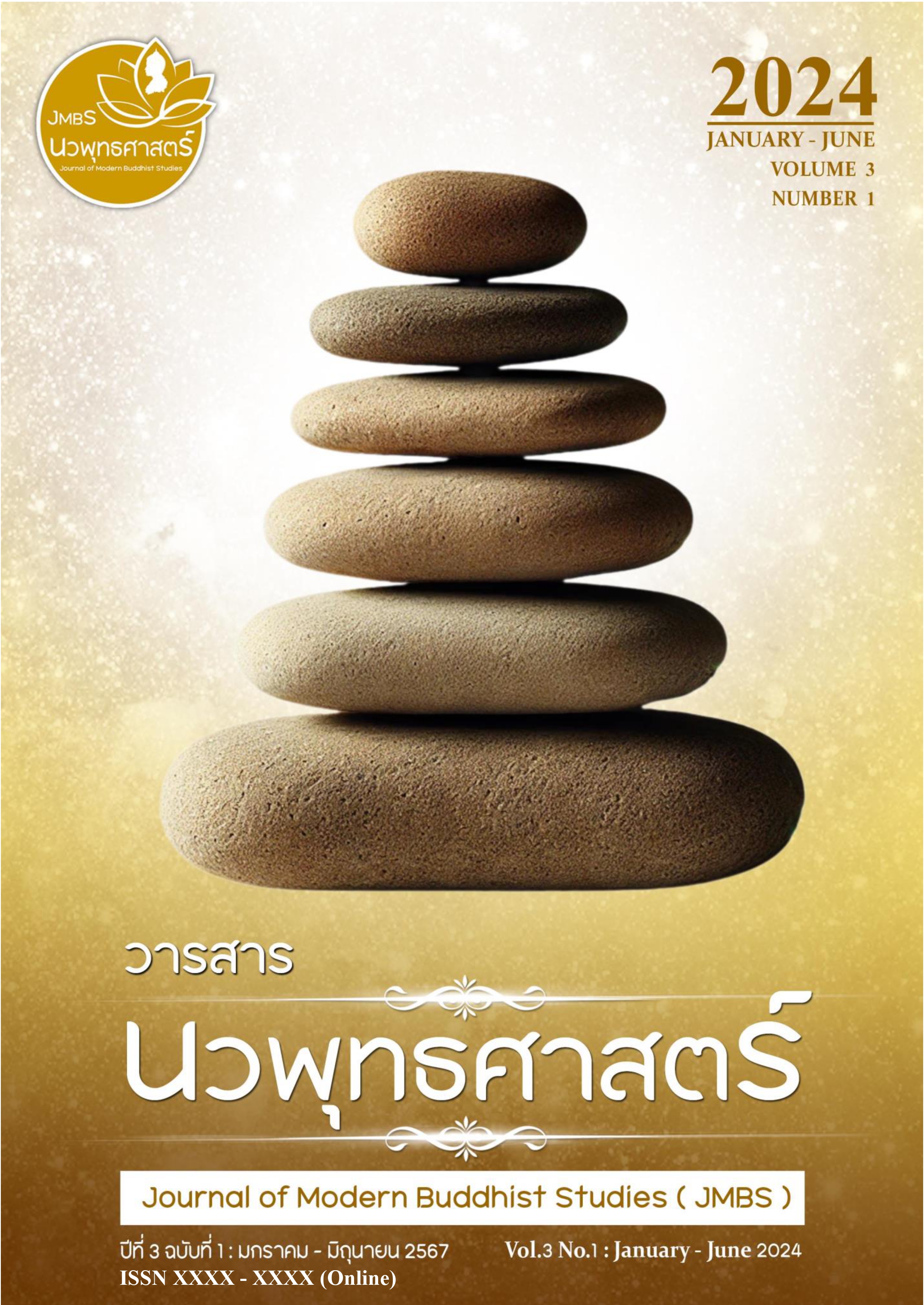DRUG-RELATED CASES: PREVENTION OF RECIDIVISM AMONG INMATES AT CHIANG RAI CENTRAL PRISON
Keywords:
Drug-Related Cases, Prison Inmates, Recidivism PreventionAbstract
This research aimed to: Study the characteristics of drug-related cases and recidivism prevention for inmates at Chiang Rai Central Prison. Analyze drug-related cases in preventing recidivism among inmates at Chiang Rai Central Prison. Propose guidelines for addressing drug-related cases to prevent recidivism among inmates at Chiang Rai Central Prison. The research employed a mixed-methodology approach, including: Quantitative research using questionnaires with a sample group of 365 participants. Qualitative research through in-depth interviews with 6 relevant individuals to explain the findings. Key Findings: 1.Characteristics of Drug-Related Cases and Recidivism Prevention Effective prevention involves encouraging offender participation, fostering understanding and support from families, and monitoring initial reintegration outcomes based on family, economic, social, and environmental factors. Development of a prevention model and training programs to enhance skills and promote employment opportunities is recommended. 2.Analysis of Drug-Related Cases in Recidivism Prevention Overall results indicated a moderate level (mean = 3.29). Among factors, economic factors ranked the highest (mean = 3.42), followed by social factors (mean = 3.41), and environmental factors ranked the lowest (mean = 3.10). 3.Proposed Guidelines for Drug-Related Cases in Recidivism Prevention Priority 1: Monitor and eliminate sources of illicit drug trade—this received the highest level of support. Priority 2: Educate communities about the dangers of illicit drugs—ranked second. Priority 3: Improve environmental conditions—ranked the lowest priority.
References
กรมคุมประพฤติ กระทรวงยุติธรรม (2561). คู่มืองานกิจกรรมชุมชน. กรุงเทพมหานคร : กระทรวงยุติธรรม.
ฉัตรชญา ศรีบุรี (2561). “การบริหารจัดการเชิงบูรณาการเพื่อป้องกันการกระทำผิดซ้ำ ของผู้ต้องขังคดียาเสพติด กรณีศึกษา: เรือนจำจังหวัดลำพูน”. ปริญญารัฐประศาสนศาสตรมหาบัณฑิต สาขาวิชานโยบายและการบริหารสาธารณะ. บัณฑิตวิทยาลัย: มหาวิทยาลัยแม่โจ้.
นวลจันทร์ ทัศนชัยกุล (2549). อาชญากรรม. ม.ป.ท: ม.ป.พ.
นันทิยา สวัสดิวิชัยโสภิต (2563). “การตกเป็นเหยื่ออาชญากรรมในสถานศึกษา กรณีศึกษา: มหาวิทยาลัยนเรศวร”. วิทยานิพนธ์วิทยาศาสตรบัณฑิต สาขาภูมิศาสตร์. บัณฑิตวิทยาลัย: มหาวิทยาลัยนเรศวร.
ปกรณ์ มณีปกณ์ (2553). อาชญาวิทยาและทัณฑวิทยา. พิมพ์ครั้งที่ 2. กรุงเทพมหานคร: เวิลด์เทรดประเทศไทย.
ประเทือง ธนิยผล (2556). อาชญาวิทยาและทัณฑวิทยา. กรุงเทพมหานคร: มหาวิทยาลัยรามคำแหง.
พระมหานันทวิท์ ธีรภทฺโท, กมลาศ ภูวชนาธิพงศ์ และอัครนันท์ อริยศรีพงษ์ (2561). “การเสริมสร้างจริยธรรมสำหรับผู้ต้องขังในเขตกรุงเทพมหานคร”. วารสารสันติศึกษาปริทรรศน์ มจร. 6 (4) (ตุลาคม-ธันวาคม).
วงศ์พันธ์ อมรินทร์เทวา (2567). พลิกหน้ากฎหมายยาเสพติดใหม่ เปิดมิติใหม่แห่งการแก้ปัญหายาเสพติดไทย สืบค้นข้อมูลจาก https://www.the101.world/new-narcotic-bills/
วรปพัฒน์ มั่นยำและศุภกร ปุญญฤทธิ์ (2563). “สาเหตุและแนวทางการป้องกันการกระทำผิดซ้ำของ ผู้ต้องขังในคดีลักทรัพย์ : กรณีศึกษาเรือนจำจังหวัดปทุมธานี”. วารสารวิชาการสถาบันวิทยาการจัดการแห่งแปซิฟิค, 6 (3) (กันยายน-ธันวาคม).
ศิริวรรณ กมลสุขสถิต (2563). “แนวทางในการป้องกันและแก้ไขการกระทำผิดซ้ำของเด็กและเยาวชนในคดีความผิด เกี่ยวกับยาเสพติดโดยอาศัยปัจจัยที่เป็นตัวทำนายทางด้านอาชญาวิทยา”. วารสารวิชาการ คณะมนุษยศาสตร์และสังคมศาสตร์ มหาวิทยาลัยราชภัฏนครสวรรค์. 7 (1) (มกราคม-มิถุนายน).
สํานักงานคณะกรรมการพัฒนาการเศรษฐกิจและสังคมแห่งชาติ (2542). แนวทางการดําเนินการป้องกันและแก้ไขปัญหายาเสพติดในสถานศึกษา. กรุงเทพมหานคร : อรุณการพิมพ์.
สุรศักดิ์ ลิขสิทธิ์ และคณะ (2558). “การศึกษาเพื่อพัฒนาแนวทางการลงโทษ หลักการลงโทษที่ได้สัดส่วนกรณีคดียาเสพติดให้โทษ”. รายงานฉบับสมบูรณ์. ม.ป.ท: ม.ป.พ.

Additional Files
Published
How to Cite
Issue
Section
License

This work is licensed under a Creative Commons Attribution-NonCommercial-NoDerivatives 4.0 International License.





